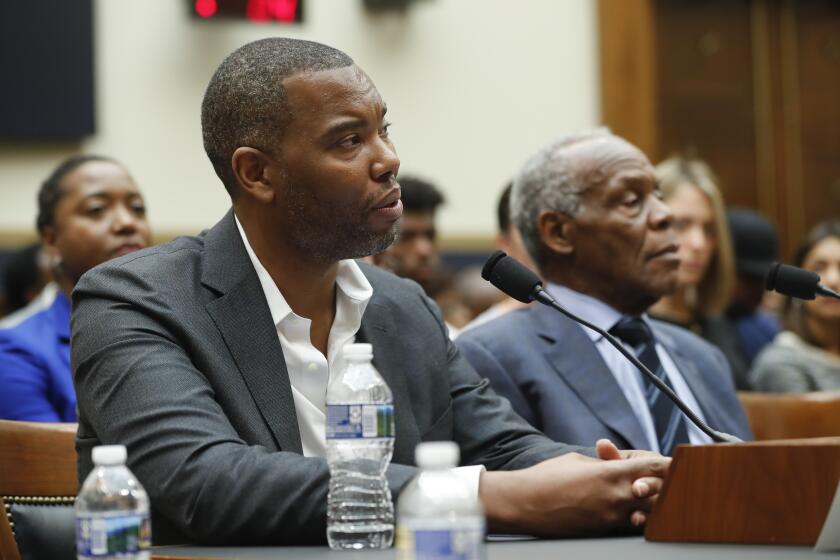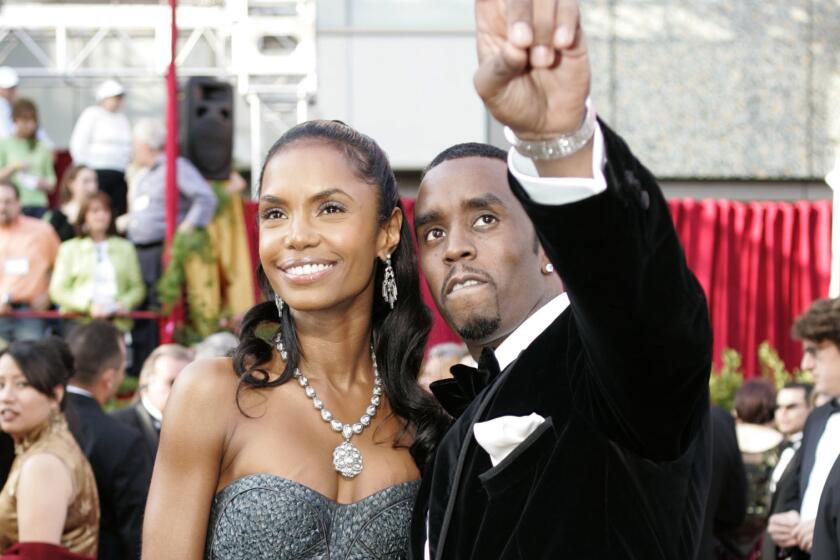Hot Hopes and Hangovers
They committed themselves “To Study the People,” as labor historian David Montgomery urged in 1980. A new generation of historian-advocates would work up an American “conception of class” to advance “our knowledge of the relations of production, social consciousness and the working class presence through a conception of social change.” The new scholarship would yield not just knowledge but social redemption, rescuing working people from what British historian E.P. Thompson called “the enormous condescension of posterity.” If history had been by its winners, the defeated needed historians to challenge a “consensus” school of American historiography that submerged memories of class conflict in celebrations of liberal democracy. By revisiting old struggles to harvest hidden seeds of victory, the new history could prepare the field for new forward marches.
Even as Montgomery spoke, “history from the bottom up” was rediscovering workers’ forgotten or little-noticed methods of political organizing and modes of communal survival, described in pioneering work by James Weinstein, Herbert Gutman and others. But Montgomery’s younger followers would be even more anti-capitalist, even more revolutionary than that: Throughout the 1980s, books driven by hot hopes for a reborn Marxist class consciousness among insurgent workers poured off university presses, dominating conferences at which reverential narrative readings alternated with quasi-doctrinal spats over how to tell what kinds of worker resisted what kinds of oppression most effectively--and most progressively. Academics who had never been (or even been among) workers like those they set out to describe became “intoxicated with their presumed roles as creators, resuscitators, and inventors of ‘a worthy tradition,”’ wrote Nick Salvatore, Bancroft Prize-winning biographer of the American socialist leader Eugene V. Debs.
Salvatore’s observation, offered in 1995, is now a post-mortem. The movement has lost scholarly focus and political traction. Amid today’s assaults on unions and on worker-friendly tax and regulatory policies, the historians’ hot hopes are yielding to hangovers and an especially sobering discovery: The “enormous condescension of posterity” from which workers need rescue now includes historian-activists’ own insulated, often-patronizing hunts for a class-based or race-based consciousness born of their dreams, not workers’. Now, yet another cohort of labor historians, including Salvatore, Michael Kazin and others who have studied the people, are making such criticisms and producing humbler, more instructive narratives. With “American Crucible,” Gary Gerstle joins them not by criticizing colleagues, as they have, but by presenting what he characterizes as a “synthetic” narrative of 20th-century America that sidelines Marxist preconceptions of class and social change.
Actually, there have been several “worthy traditions” in labor historiography, and to understand why Gerstle’s book is important we should know how they went wrong. Naturally, some of the new labor history revisited stark confrontations between workers and bosses: Chicago’s Pullman strike of 1894; the Flint, Mich., GM sit-down strikes of 1936. But its heroes had been mainly white and male (and therefore, to some younger historians, presumptively racist, sexist and patriarchal). So, broadening Montgomery’s charge, Mari Jo Buhle opened her 1981 book, “Women and American Socialism: 1879-1920” by lauding “tens of thousands of rank-and-file women, the defeated and now forgotten warriors against triumphant capitalism.” In 1986, Christine Stansell’s adulatory “City of Women: Sex and Class in New York, 1789-1860,” limned female workers’ near-autonomous consciousness, even as her husband, Sean Wilentz, sounded the Whitmanesque “Chants Democratic” of a rising (male) working class in the same city at the same time. Robin D. G. Kelley’s “Hammer and Hoe” showed black sharecroppers allied with white Communists in Depression Alabama, much as their slave ancestors had relied on Yankees. And Gerstle’s “Working Class Americanism” showed French Canadian textile workers in Rhode Island brandishing patriotic language to advance radical agendas from 1914 to 1960.
Colorful and sometimes revelatory though such studies were, most were monochromatic ideologically. They tried to recall (and renew) an anti-capitalist struggle suppressed or co-opted by capitalism, McCarthyism and the reactionary, “hegemonic” discourses of religion, white supremacy, patriarchalism, nationalism and consumerism. But the notion that “progressive” consciousness had animated working people, linking generations and transcending racial and religious differences, was a wishful fiction. Often it was disrespectful of other ways in which workers had actually organized their social lives and expressed their intimate hopes in a republic that enjoyed their support.
Worse, the affection new historians bestowed on workers was not returned. In the 1980s and ‘90s, few workers came to commemorations of famous strikes; New York’s labor council canceled its annual Labor Day parade. “The enormity of the gap between the hopes [of the historians] and contemporary workers’ consciousness is the shadow that stalks the writing of American labor history across the past quarter century,” wrote Salvatore, adding that even in Chicago in that fateful spring of 1894, Catholic parish festival rites eclipsed the Pullman strike in the minds of workers, most of whom neither supported it nor passed its memory on to their children. “It ill serves the historical actors for the historian to assume, without detailed investigation, that collective identity based on economic considerations reigned supreme in the hearts of American working people,” Salvatore warned.
Why so little class politics in America? Partly, it’s because the country’s egalitarian, populist currents ride deeper ones of individualism and anti-statism: Militant strikers often fought to stake claims on fuller American citizenship and opportunity, not socialism. “Unionism was not a transcendent cause or a lifelong career but simply a valued tool for securing a more autonomous and prosperous life,” as Michael Kazin put it. Just as real estate’s three critical standards are location, location, location, the economy’s mainsprings are mobility, mobility, mobility: Immigrants of all colors come often to shed Old World classifications and costumes, to rise out of one’s class, not with it, chasing the brass ring of personal upward mobility. An old joke runs: “What is the difference between the International Ladies Garment Workers’ Union and the American Psychiatric Assn.? One generation.”
For all the romancing of neighborhood ethnic or “ghetto” turf, the absence of territorial claims or roots distinguishes most American racial and ethnic groups from others abroad. Their members, like other Americans, move more often in a lifetime than families elsewhere do in generations. Blacks move a lot, too, and are slowly becoming less segregated. And there is mobility in interracial marriages.
With surprising determination, the new historians missed all this. Whether they blamed labor’s travails on political and economic repression or on political and economic seduction, on technological and demographic upheavals or on cultural intrusions (bourgeois or pop, religious or decadent), most of them linked any prospect of mobility to that grim reaper of workers’ politics: communism. Like an overdose of steroids, communism’s reification of class struggle energized but then tried to distort and dim the hopes it aroused, in the civic socialism of Eugene V. Debs, in the confessional nationalism of Polish Solidarity. Yet not until the Berlin Wall fell and Comintern archives opened did some labor historians stop trying to sluice American workers’ elusive ways and thoughts into Marxist proletarian channels.
Even then, Kazin lamented in the American Historical Review in December 1995 that some historians who’d given up on class war kept wandering like errant pilgrims toward mirages of racial, then “grass-roots” and then consumerist or “transgressive” resistance to capitalist oppression. Endlessly, the pilgrims sought pivots of collective defiance on which a dialectic of revolutionary justice might turn against history’s winners, who now included working-class white men co-opted by racism and consumerism.
Some of the more tenacious, sinuous Marxists modulated their views in market-oriented textbooks and popular histories, but something in them rings false outside the echo chambers of favored conferences and reviews. Even Eric Foner’s “Story of American Freedom,” a synthetic overview for thoughtful activists and students of struggles against capitalist unfreedom, was upbraided in 1999 in the New York Review of Books by none other than Theodore Draper, venerable historian of American communism, for ignoring or doubting the hard-won, if not exactly “progressive,” freedoms of ordinary Americans--’manual workers, clerks, teachers, farmers, owners of small businesses’--in order to emphasize sufferings of poor blacks and women that cast the largest possible shadow over the complicated story of American freedom.
In fairness, Foner has long been a distinguished historian of black slavery and Reconstruction. But Draper criticized him as well for downplaying the follies and occasional brutalities of the American Communist Party, which Foner calls “tiny” when he mentions its depredations yet presents as effective and inspirational in its Popular Front phase of the mid-1930s. In fairness again, Foner is one of many who want to reconcile black and feminist grievances with the older class analysis but who also want to protect class analysis from an identity politics that succumbs too easily to corporate ethnic niche marketing and the brokering of public resources by ethnocentric political hustlers.
The question is how to do that without defending the indefensible or unsustainable. Where can critics of capitalism turn for a historiography that poses the right questions? Not back to wishful accounts of class war. What about taking another look at the liberal-nationalist “consensus” that harks back to Louis Hartz and Arthur Schlesinger Jr. and is being refined by such writers as David Hollinger and Michael Lind? Liberal nationalists don’t deny America’s brutalities and inequalities, but they ask, “Compared to what?” What if loyalty to nations like ours has been, on balance, more empowering than exclusionary? What if the line between American history’s victors and vanquished isn’t as sharp as some accounts suggest? What if many workers, eulogized as “forgotten warriors,” have actually won quite a lot? What if nonwhites and women can gain more ground--and, working with white men, curb capitalism’s abuses--if they honor and enrich American civic ideals, as did Debs, Susan B. Anthony, Elizabeth Cady Stanton, John L. Lewis and Martin Luther King Jr.?
Such questions have given pause to Gerstle, who avoids romanticizing workers, women and people of color. His heart is still with the left that rejects liberal nationalism, but his scholarship keeps yielding truths that confound progressive historiography. Reviewing Lind’s liberal-nationalist “The Next American Nation” in the leftist-Jewish magazine Tikkun in 1995, Gerstle called “for working-class Americans to build political and social institutions that will draw them out of their cultural bunkers and into conversations with each other about shared expectations, grievances, and concerns.” But he challenged “those of us who support this endeavor, but who are skeptical of liberal nationalism’s claims, to offer an alternative ideology upon which a vigorous common culture can be based.” Was he holding out for a renewed Marxism? “American Crucible” offers no “alternative ideology,” but it does continue the conversation he called for, pointing it beyond empty proletarian applause lines of the past.
As his subtitle “Race and Nation in the Twentieth Century” suggests, Gerstle recounts epic battles and illicit intimacies between, on one side, varied civic nationalisms (of Progressives, Popular Front Communists, anti-communist Cold Warriors and postwar liberals) and, on the other side, the varied racial nationalisms (of white supremacist empire-builders, nativists, segregationists, Anglo-conformists and, in reaction, black power and separatist champions who played a sad role in deferring progressive change). As he gives us the interplay between a civic demos and a racial ethnos, between democratic ideals and racial fantasies, Gerstle often leaves Marxist class politics behind. His introduction outlines the book without using words like “working class” and “labor” except in a paragraph mentioning the Popular Front of 1935-1939, when “civic nationalism even became a tool in the hands of anticorporate socialists and communists who saw in its elastic principles an opportunity to claim that economic egalitarianism would honor America’s civic creed.”
If Gerstle shows progressive activists struggling to surf a more powerful civic nationalist current, he also shows them trying to ride powerful, if antipathetic, racial-nationalist currents: In the 1920s and ‘30s, Jewish and other ethnic communists adopted WASP surnames and body language that reenforced the Nordic ideal in America’s civic-national self-image; later, younger white leftists contorted themselves to become virtually black or Latino, riding a different racial nationalism into another dubious dawn. Although Gerstle credits Foner (and the political scientist Rogers Smith) with acknowledging “the full influence of race and other forms of exclusion without slighting the power of civic ideals,” he takes civic ideals far more seriously: He shows Debs, Lewis and King appealing to civic nationalism, not Marxism, because more often it was civic ideals that stirred workers and poor blacks. He’s even quite taken with Theodore Roosevelt’s strange brew of civic and racial nationalism, which he presents as the stimulant of much good in 20th-century America.
“Although racism compromised TR’s civic nationalism, he felt ... what he called ‘true Americanism,’ deeply, and it allowed him to welcome ... ‘lowly’ and ‘racially inferior’ European immigrants.... It is easy to belittle the progressive character of Roosevelt’s inclusionary attitudes.... But Roosevelt’s embrace of [them] was not popular among many native-born Protestant Americans of his time....” Nor was his lunching with Booker T. Washington at the White House, as Gerstle reports in a subtle appreciation of how Roosevelt began to let his civic principles trump his racial predilections.
Even Roosevelt’s rather heavy-handed Americanization policies toward immigrants (especially foreign-born radicals) had progressive consequences later: “Because [his] disciplinary project had accomplished its aims, reducing the number of immigrants and increasing the pressures on those already here to Americanize,... [Franklin Delano Roosevelt] could ... welcome them into the American family.... TR would have been pleased with how the New Deal supplemented the discipline of the World War I era with [economic and social] opportunities..., enabling it to forge a new nation out of heterogeneous stocks.”
But didn’t lynchings soar, and wasn’t the New Deal crafted out of deals with segregationists? Gerstle acknowledges these uncomfortable truths and more: He follows the mythos of virile white supremacy into New Deal iconography (those murals of muscular workers) and the World War II bonding of white soldiers, second-generation Americans whose own parents still thought them members of incompatible races. In the crucible of combat, Gerstle writes, they set a higher democratic standard whose benefits couldn’t be denied to black soldiers who had also fought fascism.
Gerstle presents this shift from racial to civic nationalism richly, but he doesn’t annul the marriage of WASP iconography and civic nationalism just because it has been so credibly challenged by the civil rights movement. He tracks WASP iconography onward in such movies as Frank Capra’s “Mr. Smith Goes to Washington” and in the TV heroics of Superman, warrior for “Truth, Justice, and the American Way.” He even dares to wonder if it was always unfortunate that “civic nationalism and [the] Nordic ideal advanced together.” That’s unthinkable to colleagues who still dismiss the uniting of Slavs, Jews, Italians and Anglo-Saxons in a constitutional republic as little more than an anti-black conspiracy. If they’ve read any European history, they ought to accept Gerstle’s assessment that the Americanization of white immigrants, both enforced and embraced, was, on balance, a world historical gain, a precedent for the New Deal and, later, black civil rights.
“The new consensus on the importance of belonging to the American nation would not yield political quiescence,” he explains. Fighting racial-nationalist restrictions on immigration of 1924, activists “turned to civic nationalist principles as a way of combating the racism they deplored. Moreover, the frustrations with the fragility of working-class life inclined growing numbers in this group to elaborate a set of economic rights as central to civic-nationalist fulfillment.” Here, Gerstle bares some of his Marxist roots: Even communists, for all their delusions and deceits, “actually strengthened the bonds of American nationhood” until “the anticommunism of the Cold War snapped [it] back into an older, and less flexible, form.”
Yet Gerstle doesn’t demonize Cold War anti-communism. Both his sympathy with TR’s expansive civic nationalism and his account of the Cold War suggest that if progressive politics had any chance at all to reconcile itself with American individualism and anti-statism, it was doing so until communism corrupted it and gave Joseph McCarthy reasons to pounce on it. Gerstle knows that, however pitiable its victims, McCarthyism didn’t excuse Stalinism. And he suggests that more civic nationalism, not more class-war politics, might have won more economic rights. Gerstle even writes that the Cold War anti-communist crusade, “while generating an undercurrent of fear ... intensified popular devotion to principles of freedom and democracy.... This was the spirit that impelled a majority of Americans to endorse the civil rights revolution....”
That may be too generous to liberals, who could betray civic nationalist hopes even when free of anti-communist fervor: Gerstle recounts how civil rights activist delegates to the Democrats’ 1964 national convention found the party’s liberals obligated to its white racial-nationalists, who blocked the civil rights activists’ voting rights on the floor. No longer would they trust “white” civic nationalism and its liberal institutions. Yet the ensuing black rage didn’t empower blacks by disowning civic nationalism, any more than communists had won deep economic reform by hijacking the American left.
Gerstle doesn’t exactly brandish such conclusions; he opens doors to them by avoiding purse-lipped dismissals of the politically incorrect thinking of TR, FDR, Frank Capra’s heroes, Superman and Steven Spielberg’s “Private Ryan’--white men whose flawed but democratic gains leftists should appreciate in context instead of leaving them to be exploited narrowly by Ronald Reagan or George W. Bush. Anyway, nowadays it’s those men’s once-’hegemonic” American civic nationalism that’s all-but-forgotten if not, indeed, defeated by global capitalist elites as well as leftist crusaders. What the German philosopher Jrgen Habermas admiringly calls American “constitutional patriotism” needs rescuing from enormous condescension too.
‘American Crucible” makes that rescue more plausible by showing that you can support labor organizing and insist that many who embraced communism in the 1930s were idealistic and brave, even as you also insist that Marxism isn’t the salvation of those shortchanged by the American consensus. To read Gerstle after leaving Foner, Wilentz, Stansell, Kelley and other hot-hope historians aside is to think a little more freely of this country’s possibilities. His prose is often workmanlike, at best; it doesn’t take wing where other writers flutter at the drop of a worker’s hard hat or bobbin. But the sobriety and sheer depth of Gerstle’s engagement with real Americans’ struggles spells relief from tributes to “forgotten warriors” that read like old placards in a May Day parade. Study “the people” here first.
More to Read
Sign up for our Book Club newsletter
Get the latest news, events and more from the Los Angeles Times Book Club, and help us get L.A. reading and talking.
You may occasionally receive promotional content from the Los Angeles Times.







